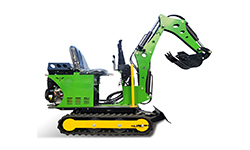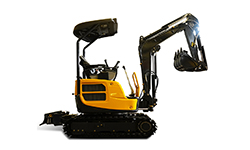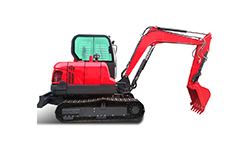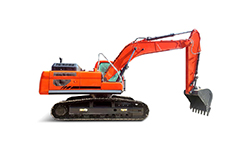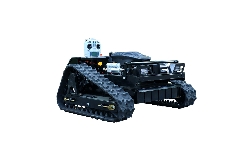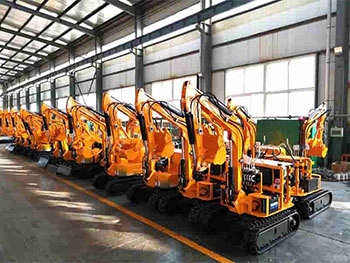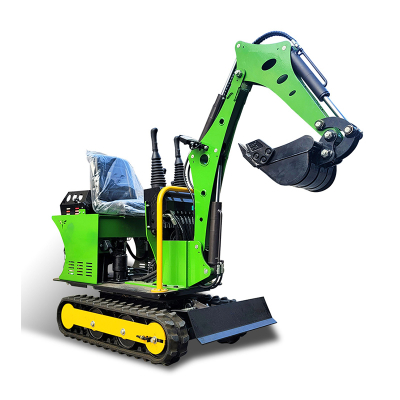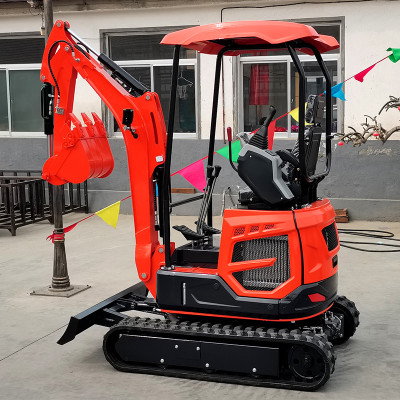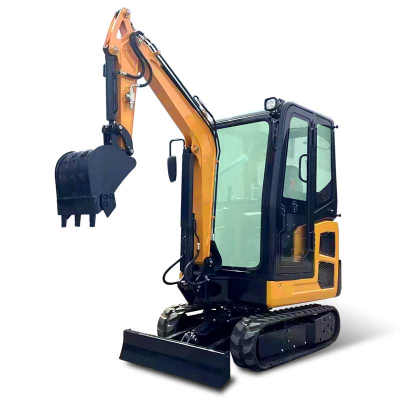Factors for excavator performance
Operating weight: One of the three main parameters of the excavator refers to the total weight of the excavator with standard working equipment, driver and full fuel. The operating weight determines the level of the excavator and also determines the upper limit of the excavator's digging force.
2. Engine power: One of the three main parameters of the excavator, which is divided into total power and net power, determines the dynamic performance of the excavator.
(1) Total power (SAE J1995) refers to the power output measured on the engine flywheel without power-consuming accessories such as silencers, fans, alternators, and air filters.
(2) Net power: 1) refers to the output power measured on the engine flywheel when equipped with all power-consuming accessories, such as silencers, fans, generators and air filters. 2) refers to the output power measured on the engine flywheel when equipped with power consumption accessories necessary for engine operation, generally fans.
3. Bucket face: One of the three main parameters of the excavator refers to the volume of materials that the bucket can load. An excavator can be configured with buckets of different sizes according to different material densities. Reasonable selection of bucket capacity is one of the important means to provide working efficiency and reduce energy consumption. Bucket capacity is generally divided into two types of pile bucket capacity and bucket capacity, and excavators commonly demarcated bucket capacity as pile bucket capacity. According to the different natural resting Angle, there are 1:1 pile bucket capacity and 1:2 pile bucket capacity.
4. Digging power Including the bucket rod mining force and the bucket mining force, the power of the two mining forces is different, the bucket rod mining force comes from the bucket rod cylinder, and the bucket mining force comes from the bucket cylinder. According to the different application points of digging force, the calculation and measurement methods of excavators can be divided into two categories:
(1) The ISO standard is used at the edge of the bucket blade.
(2) SAE, PCSA, GB standards are used at the tip of the bucket teeth.
5. Scope of work It refers to the internal area where the limit position point can be reached by the tip of the bucket teeth when the excavator does not turn. Excavators often use graphics to visually express the scope of their work. The working range of excavator is usually expressed by the maximum digging radius, maximum digging depth, maximum digging height and other parameters.
6. Shipping size Refers to the dimensions of the excavator in the state of transportation. The transportation state generally means that the excavator stops on a flat ground, the longitudinal center surfaces of the upper and lower car bodies are parallel to each other, the bucket cylinder and bucket rod cylinder extend the longest length, the boom is lowered until the working device touches the ground, and all the open parts are in the closed state of the excavator.
7. Turning speed and turning moment
(1) Rotation speed refers to the maximum average rotation speed that can be achieved by stable rotation when the excavator is unloaded. The marked rotation speed does not refer to the rotation speed at starting or braking. For general mining conditions, when the excavator is working in the range of 0° ~ 180°, the rotary motor accelerates and decelerates, and when it is turned to the range of 270° ~ 360°, the rotary speed is stable.
(2) Turning moment refers to the maximum moment that can be generated by the excavator's turning system. The size of the turning moment determines the ability of the excavator's turning acceleration and braking, and is an important index to measure the excavator's turning performance.
8. Walking speed and traction For crawler excavators, walking time accounts for about 10% of the entire working time. Generally, excavators have two walking gears of high speed and low speed, and two speeds can well meet the performance of excavator climbing and flat walking.
(1) Traction refers to the horizontal pulling force generated by the excavator when it walks on the horizontal ground, and its main influencing factors include the low-speed displacement of the walking motor, working pressure, the pitch diameter of the driving wheel, and the machine weight. Excavators generally have a large traction force, which is generally 0.7 to 0.85 times the weight of the machine.
(2) Walking speed refers to the maximum walking speed of the excavator when walking on the standard ground. Crawler hydraulic excavator walking speed is generally not more than 6km/h. The hydraulic belt excavator is not suitable for long distance travel. The walking speed and tractive force indicate the movable flexibility and walking ability of excavator.
9. Climbing ability Excavator climbing ability refers to the ability to climb, downhill, or stop on a solid, flat slope. There are two ways to express the Angle and percentage:
(1) the climbing Angle θ - generally 35°.
(2) Percentage ratio table tanθ = b/a, - generally 70%. The microcomputer indicator is generally 30° or 58%.
10. Improve your abilities The lifting capacity refers to the smaller of the rated stable lifting capacity and the rated hydraulic lifting capacity.
(1) Tipping load with rated stable lifting capacity of 75%.
(2) 87% hydraulic lifting capacity of rated hydraulic lifting capacity.
